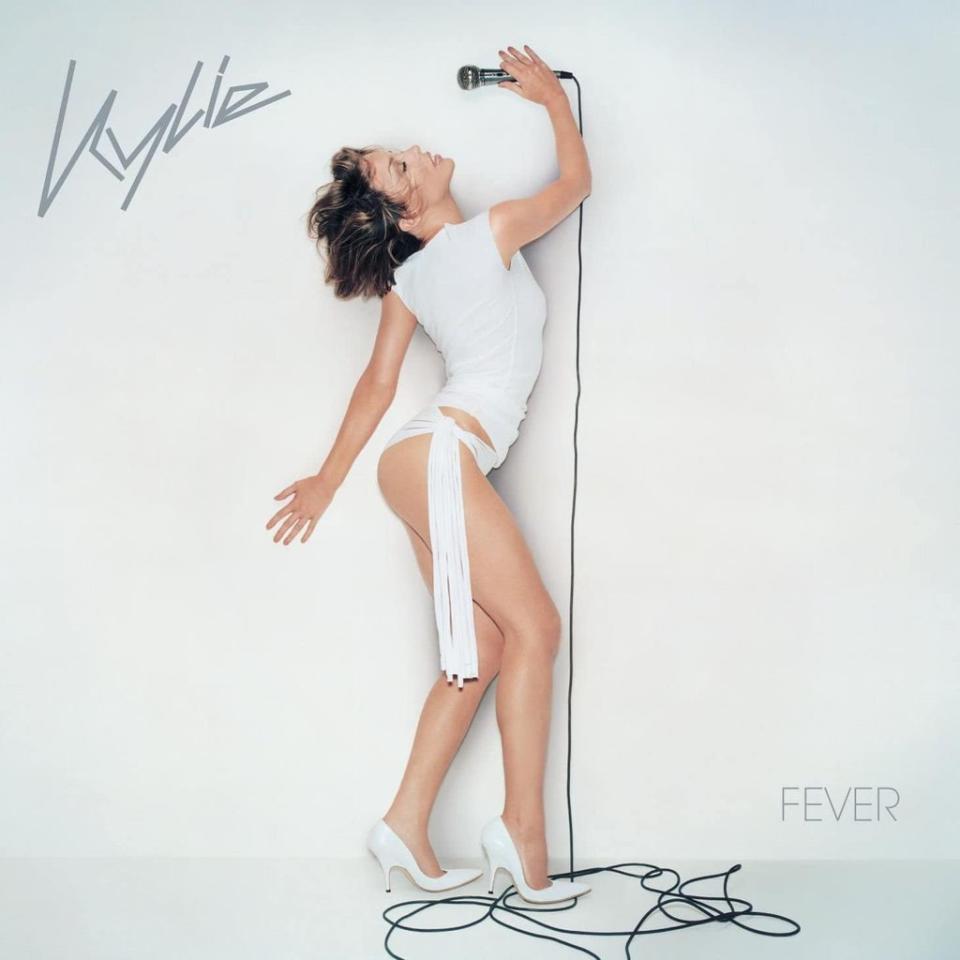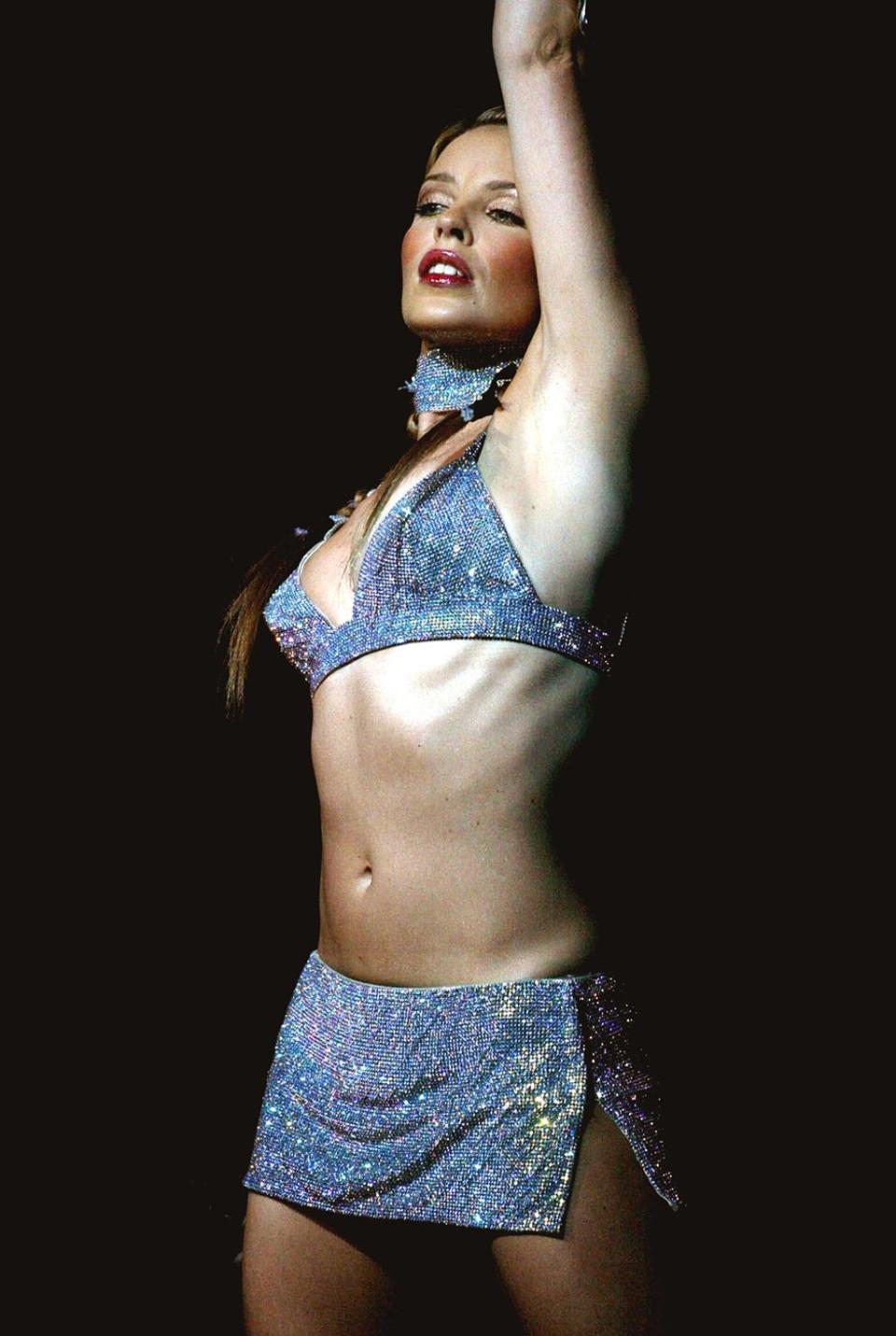‘Can’t Get You Out of My Head’ at 20: Kylie’s thrilling chart banger is the best pop song of the 21st century

The greatest pop song of the 21st century begins with a cyberpunk groove and a chilly “la-la-la” refrain. In the accompanying video, Kylie Minogue sits behind the wheel of a large automobile, cranking it into top gear. As she does so, “Can’t Get You Out of My Head” rumbles to life. Kylie is hurtling towards her imperial phase at maximum speed.
Fever, Kylie’s eighth studio album and the record that gave the world “Can’t Get You Out of My Head”, turns 20 on 1 October. With six million copies sold, it is by some distance Minogue’s most commercially successful LP. And, by consensus, her artistic zenith.
The record’s stand-out moment is, of course, “Can’t Get You Out of My Head”. The Sistine Chapel of chart bangers was written in just an afternoon by first-time collaborators Cathy Dennis and Rob Davis (of Seventies glamrockers Mud). And yet it feels like the eternal pop song. It’s hard to imagine a time when it didn’t exist. And it’s just the start of Fever’s hit parade.
There is also “Come Into My World”, another Dennis-Davis composition added at the 11th hour (Kylie recorded it the night before flying to Germany for a photoshoot). Also jostling for prominence are “In Your Eyes”, one of the five Fever cuts for which Kylie receives a co-writer credit, and the heartfelt title track, which thrillingly burnishes Kylie’s credentials as Queen of the Dancefloor. “I feel like I’m on a wave and I actually know how to stand on the board at this point,” is how Kylie characterised this period of her career in an interview with The Observer in 2001. “I feel quite solid. I don’t know where it’s taking me, but everything feels really good.”
If she didn’t have a firm idea where she was going, she of course knew exactly where she was coming from. Minogue may be the timeless pop star – as beloved today as in the 1980s when “I Should Be So Lucky” made Charlene from Neighbours the face of the Stock Aitken Waterman hit factory. Yet, in a way, Kylie’s career more closely resembles that of a classic rock act, with early success followed by a wilderness period and then a glorious comeback.
Kylie’s lost years were in the late Nineties. Signing to dance label Deconstruction, she alarmed fans by pursuing an “indie” direction with her sixth album, Impossible Princess – hastily renamed Kylie Minogue in the UK following the death of Princess Diana two months before its release. Whatever its name, the record wore its indie disco influences on its sleeve. “Too Far” was Kylie doing Garbage. “Some Kind of Bliss”, the first single, opens with a barrage of Britrock guitars. It sounds like Menswear smuggled on to a Kylie tune.
Impossible Princess/Kylie Minogue was a modest success, shifting nearly 70,000 units in the UK and peaking at 10 in the charts. But because it was not a stone-cold smash, open season was declared on Kylie, who’d had the nerve to look beyond pop music by working with the Manic Street Preachers and Soft Cell/Virgin Prunes producer David Ball.
“A total fraud,” sneered the NME. Virgin Radio put out an ad campaign proclaiming, “We’ve done something to improve Kylie’s records: we’ve banned them”. The pop industry relishes nothing so much as a female artist on the back foot and Kylie copped the full force of a backlash.
She didn’t let the jeers affect her, however. And, having quietly signed to Parlophone, in June 2000 Minogue delivered a steamroller comeback with “Spinning Around” (written by Paula Abdul) and the follow-up album Light Years. In a sense, Kylie was starting over. Which is why Light Years resembles, to some degree, a scrappy debut from a new artist with something to prove. And why Fever, released just 13 months later, feels like one of those classic second LPs that takes everything great about its predecessor and doubles down on it. It’s Kylie’s Thriller, Nevermind, Paul’s Boutique and Back to Black rolled into one.
“Can’t Get You Out of My Head” was written with Simon Fuller’s S Club 7 in mind. It was he who had suggested Dennis and Davis work together. But he passed and the track was instead offered to Sophie Ellis-Bextor. She demurred too, which is how it found its way to Kylie’s A&R team of Miles Leonard and Jamie Nelson.
Kylie was played a cassette demo with lead vocals by Dennis. Before the first chorus had kicked in, she told her people to tie down the rights to the song. Such was her enthusiasm that she performed “Can’t Get You Out of My Head” on stage at Hammersmith Apollo in March 2001, months before she recorded it. “We did it in the back of the garage of my house in Epsom,” recalls Davis of his time working with Kylie. “She was very sweet. She brought food for everyone in the house. She’d learnt the song. A lot of singers who have been actors or actresses, it makes them a little more professional. Your average vocalist will probably turn up on the wrong day or they’re hours late. But she was very conscientious.”
“Can’t Get You Out of My Head” had come as a bolt from the beyond to Davis and Dennis (who would go on to write “Toxic” for Britney Spears). During the recording with Kylie, Davis had a specific sensibility in mind. “When it was produced, I was listening to Daft Punk,” he says. “They were very futuristic at the time. But they used samples. We didn’t use any. And Kylie just brought her sound – it’s one of the things that worked. We did work on the vocal production to get the right sound for her. It’s basically copied from Cathy’s first vocals. It’s pretty identical to that.”

Fever came together quickly. Kylie bounced between 11 producers – among them Britney Spears collaborator Steve Anderson and Dido/Natalie Imbruglia producer Pascal Gabriel – and recorded it in Olympic Studios in London, Hutch Studios in Chicago and Windmill Lane in Dublin.
While it’s “Can’t Get You Out of My Head” that continues to drive listeners to hyperbole and beyond, the entirety of Fever deserves to be feted. From the funk shimmer of “More More More”, to the Daft Punk-esque “Love at First Sight” via the sci-fi disco of “Give It to Me”, this is a record brimming with cybernetic cool.
The album sold and sold. It debuted at No 1 in the UK and peaked at three in the US. And the reviewers were ecstatic. Rolling Stone identified the contradictions that made it so compelling – noting it was “full of old-fashioned hooks and newfangled techno hiccups, campy as a tent full of Boy Scouts and yet easy on the cheese”. “Can’t Get You Out of My Head”, in particular, would quickly transcend music to become a cultural artefact. It launched the career of designer Fee Doran, of the Mrs Jones label, who created the future-shock hoodie that Kylie wears in the video. And it has inspired tributes from the strangest of places. Adam Curtis took inspiration from the song when making his recent through-the-looking-glass documentary about the invisible forces that shaped social change through the 20th century – which he, of course, named Can’t Get You Out of My Head.

Curtis was, if anything, late to the party. Paul Morley, the purple-prosed bard of rock intellectualism, had in 2003 used “Can’t Get You Out of My Head” as an inspiration for an entire book, Words and Music: A History of Pop in the Shape of a City. Typically for Morley, the tome is a dense and digressive exploration of the history of pop music. It starts, however, with the author in an unusually clear-eyed frame of mind and listening to Kylie. The book correctly identifies “Can’t Get You Out of My Head” as a feat of true art. “Something happened during the production of the song, during the processes that built the song up from an idea into a thing, that made it something more, a piece of music that is much more than the sum of its parts,” he gushes. “In fact, its clear abstract likeability outstripped the momentary hopes for its commercial likeability because somehow it became not a calculated representation of a great pop song but actually a great pop song full stop.”
That’s just a rather overwrought way of the author saying that he really, really liked the tune. And, of course, Kylie does not need the approval of middle-aged music critics. Her validation is in her millions of fans and of her ability to continue creating fantastic music. “People love to hear ‘Can’t Get You Out of My Head’… just as much as they love hearing Kylie’s Eighties songs,” says Kylie covers artist Jade Chamberlain.
Two decades on, Fever remains a mesmerising listen. More than that, it’s one of those rare LPs that transports you to a universe of its own making. As the cybernetic beats trumpet the arrival of “Come Into My World” and “In Your Eyes”, it’s hard not to feel that the album is picking you up and carrying you off somewhere. Just like Minogue at the start of the “Can’t Get You Out of My Head” video, it’s a project that hurtles towards a glittering horizon – and that sense of possibility is as thrilling today as it was 20 years ago.
Read More
Kylie review, DISCO: Glitterball pop album reminds us of being alive
Tori Amos: ‘I was on my knees emotionally. I could not deal with one more crisis’
Is ‘Another Way to Die’ the weirdest Bond theme ever?
James Blake interview: ‘I think a lot of depression is just repressed rage’

 Yahoo News
Yahoo News 
